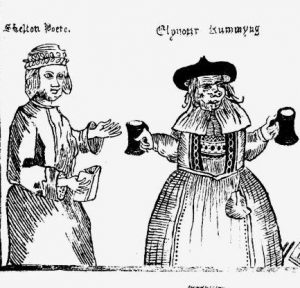* Luca Rinaldi, Tomaso Vecchi, Micaela Fantino, Lotfi B. Merabet, and Zaira Cattaneo, ‘The Ego-Moving Metaphor of Time Relies on Visual Experience: No Representation of Time Along the Sagittal Space in the Blind’, Journal of Experimental Psychology: General, 147 (2018), 444–450.
* Marc W. Howard, ‘Memory as Perception of the Past: Compressed Time in Mind and Brain’, Trends in Cognitive Sciences, 22 (2018), 124-36.
* Mark Mills, Paul Boychuk, Alison L. Chasteen, and Jay Pratt, ‘Attention Goes Both Ways: Shifting Attention Influences Lexical Decisions’, Journal of Experimental Psychology: General, 147 (2018), 282-91.
One of the very first posts on this blog, published on Day 1 if not the actual Post 1, discussed an article in Trends in Cognitive Sciences about our spatial understanding of time. Humans persistently do things like conceiving the future as something in front of us, and the past as something behind. Appropriately enough you can read all about then back, over our shoulders in the hinterland, here. And here in Post no. 200 I am returning to the same theme. So that’s a satisfying thought. I have no other particular thoughts about this being Post no. 200 so I will press on with some brief notes on these three recent essays in related territory.
*
Rinaldi et al. decided to test whether blind people also think of the past as behind them and the future in front. Their method was a test in which subjects had to respond to words, some referring to past or future, with hand movements forward or back. Sighted participants showed a bias towards future-goes-with-forward (etc.); blind participants did not. Furthermore, sighted participants tended to view future events as closer to them than past events — some sort of forward-facing bias — but blind participants saw both as equidistant. There is intriguing evidence, then, that visual experience is necessary to the sort of spatial time-orientation evident in most people.
Howard suggests a different analogy between space and time. He says that we could extend the analogy between visual perception and temporal perception. We have quite a developed understanding of how ‘retinal space is compressed such that acuity decreases further from the fovea’. Could this (and its associated equations) be used as a way of understanding the way that time-perception is compressed more when things get further from the present? Howard thinks there are enough parallels between the two for this approach to be promising. I’m not the one to decide, but, you know, brave try, good luck.
Finally, Mills et al. tested the link between the spatial components of concepts (e.g. God makes us think up, a submarine makes us think down), and responses to targets: perhaps ‘thinking of a spatial metaphor activates an internal spatial representation which in turn influences the allocation of attention in the visual field’. Sure enough, performance in target-spotting is improved by concept-orientation of the right sort. And there’s more: people were better at solving anagrams when the words were located in the appropriate locations in the visual field: up for ‘cdulo’ [cloud], down for ‘dplhion’ [dolphin] and so on. OK, they admit, the background ocean-sky picture seems to have helped, but still, quite wow, because not all the words were ocean-sky words.
The word-lists themselves are a draw for me — I love experimental word-lists, and here we have up-words, down-words, left-words, right-words, and best of all non-words. And all of this is adding nuances to that very interesting combination I explored on Blog Day 1. There I made what I still think are some neat literary links, especially the bit about fairies and their perception of time in Shakespeare’s A Midsummer Night’s Dream. Here I don’t have any new quotations to offer — no time for much thought at the moment! — but I hope to get back to this one day.

